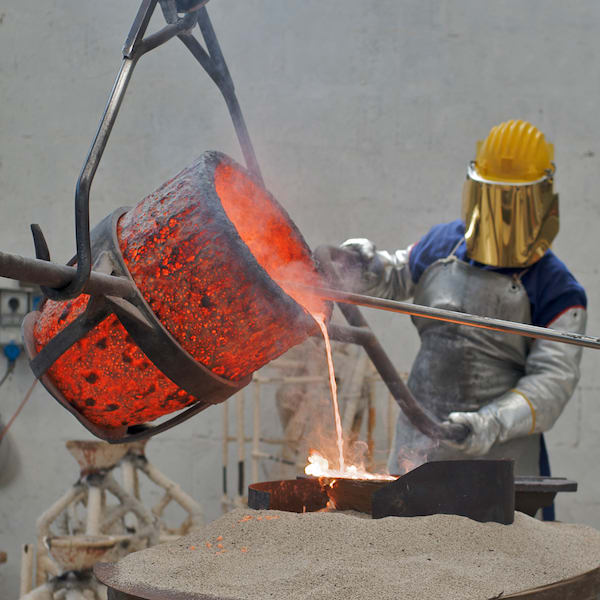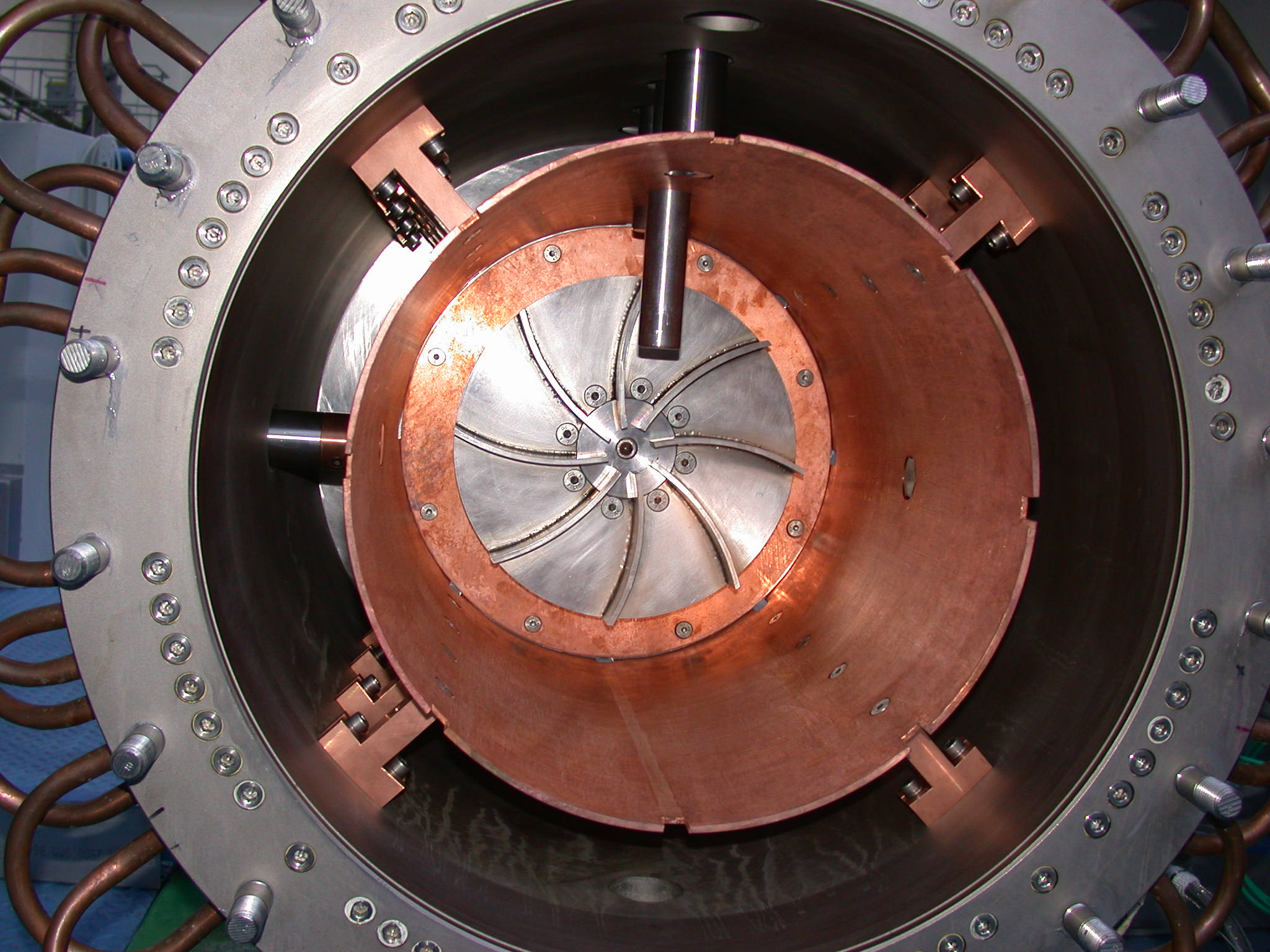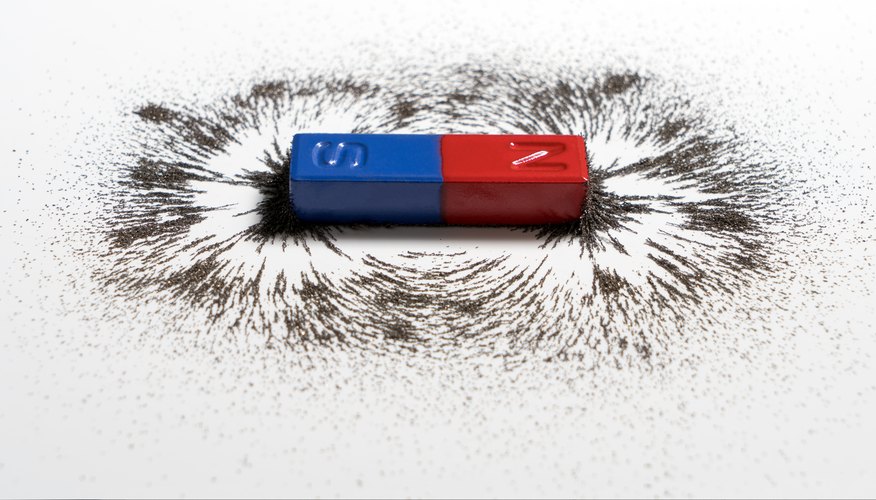
Melting Metal
In industrial practice, various methods of external influences on metal melts are used. For example, vibration processing, exposure to ultrasound, and other physical fields. The main purpose of such influences is purposeful grinding of the metal structure, which contributes to the improvement of mechanical characteristics. The article presents an overview of research on pulse processing of.

Melting Metal with Induction
The billet heating technique by rotating conductive material in a magnetic field for aluminum extrusion has been reported, but metal melting technology by the induction heating with the dc magnetic field has not. Further complex geometries of aluminum profiles are formed by the casting that requires highly efficient metal melting technology. In order to verify the capability of induction.

Flexitune Levitation Melting YouTube
The electromagnetic levitator ISS-EML on the International Space Station (ISS) offers perfect conditions for such experiments. This way, data for process simulations is obtained, and a deeper.

melt metal with field, Electronic and
The Electric Metal Makers Guild is an international organization of electric melting furnace operators. The purpose of the Guild is to promote the development, manufacture, and use of metals produced, refined, or treated, wholly or partially, in electric melting furnaces. Its mission is to assist the metal melting industries through the.

Physics Molten Metal
84 Comments by: Brian Benchoff April 8, 2012 built by [bwang] over on Instructables. It gets hot enough to melt and forge steel, iron, and aluminum. this induction heater from a few years ago. A.

levitation melting of aluminium (MHD simulation) YouTube
Smelting is the process of removing a metal element from mined ores. Most metals are found as veins in rocks, or as parts of other elements. Smelting is the first step of extraction. Melting is what is done with metal alloys or pure metals. Scrap is melted, ore is smelted. Pig iron is the rough iron ingots created from iron ore smelting.

Melt metal with Physics Science Experiment YouTube
A simple electromagnet consisting of a coil of wire wrapped around an iron core. A core of ferromagnetic material like iron serves to increase the magnetic field created. The strength of magnetic field generated is proportional to the amount of current through the winding. Magnetic field produced by a solenoid (coil of wire). This drawing shows a cross section through the center of the coil.

Many Moving Melting Metal YouTube
The details of the ARPES and trARPES experiments, as well as a short introduction to the CDW physics in TbTe 3, are presented in ().First, we used ARPES to characterize the charge dynamics of the CDW system TbTe 3 in thermal equilibrium. TbTe 3 is a member of the RTe 3 family of compounds that exhibit a FS nesting-driven CDW formation (4, 7, 8).The diamond-shaped normal-state FS of RTe 3 can.

melting metal? YouTube
Electromagnetic metal casting (EMC) is a casting technique that uses electromagnetic energy to heat metal powders. It is a faster, cleaner, and less time-consuming operation.
17 Metals With the Highest Melting Points (and Why) Materials Science
The Electromagnetic-Levitator (EML) on the ISS is discussed and possible designs for future EMLs are presented. Further, the possible applications of metal as a potential source of propellant for electric propulsion systems and as feedstock for in-space manufacturing are discussed.

Melting Points of Different Metals
1. Electric furnaces are offered with holding capacities from 1,200 to 20,000 lbs. These metal capacities allow for maximum drawdown prior to recharging. 2. The furnace is capable of "melting back down" if a metal freeze-up occurs due to extended power failure. The time frame of the re-melt depends on metal temperature and holding capacity.

Iron can melt, what happens when the melts? By HSMAG
The purpose of this review is to: (i) give an overview of the main EPMs used in the manufacture of bulk ceramic or metals components; and (ii) to generalize physical effects (field/current effects on matter) within EPMs.

How To A Steel Nail Dr Bakst
1 Altmetric Explore all metrics Abstract Heating plays a vital role in various manufacturing processes of metallic products. Microwave heating has many advantages over conventional conductive heating methods while it is currently limited to heating dielectric materials and powdered metals.

Melt metal tools with electric shock Experiment Crazy Transformator
The copper wire has a significant amount of AC electricity running through it, causing it to act like a really strong electromagnet. In the metal slug, eddy.

Which part has the maximum attraction in a Infinity Learn
Induction heating is the process of heating electrically conductive materials, namely metals or semi-conductors, by electromagnetic induction, through heat transfer passing through an inductor that creates an electromagnetic field within the coil to heat up and possibly melt steel, copper, brass, graphite, gold, silver, aluminum, or carbide.

Metal Melt & Pour Life of a Casting Reliance Foundry
Subsequently, the field of application of electro-magnetic pulse (EMP) was significantly expanded. The authors note that the metal melt was processed by PMF with the parameters 75hI·A and 6kI·Hz (here hI and kI, which describe the characteristics of the machine, are the coefficients of the pulse generator and remain constant). The ingot.